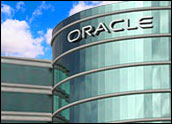
The challenges that all enterprises face today are numerous — store more data, provide more services, control costs, and now monitor and manage energy costs and carbon impacts. Today there is mounting pressure on CIOs and CFOs to deliver improved services while curtailing costs. To transition IT organizations into service providers for their businesses, CIOs must be empowered with new levels of visibility into the financial and environmental impacts of their IT services and the facilities where they operate.
This requires deep analysis of IT processes to deliver operational and strategic intelligence. The goal is the alignment of an enterprise’s business with IT services to ensure that the data center is most effectively meeting the needs of the business it supports. Often energy is an overlooked component of this strategy; however, the true definition of efficiency is maximizing the amount of work done for every watt of energy consumed. Getting more IT services out of the same power and space footprint nets millions in capital deferred through freed resources and significant operational improvements. In this regard, true data center efficiency is only achieved through complete visibility about energy performance throughout a data center.
A Systematic Approach to Gathering Energy Intelligence in the Data Center
The data center drives business information for the enterprise, and yet the enterprise has no visibility into the enormous data center capital and operational costs. It is amazing how few data centers know when they will run out of capacity, or how much of their storage is actually in use. These statistics are even more incredible when you consider that data centers, on average, consume more than 20 percent of the energy bill of Global 2,000 companies.
Enterprise data centers consume US$300 million or more of a company’s yearly IT budget, with depreciation expenses making up more than half. Since energy is largely becoming a constrained resource, the industry now describes data centers in terms of their power capacity. You’ll often hear “we’re building a 5 megawatt data center” or “it costs $10 million to build 1 megawatt of capacity.” By looking at energy in the context of IT services, data centers can tackle the huge infrastructure and operational costs to run an optimized system.
Lack of visibility into energy performance, where the amount of useful work performed per unit of energy is maximized, must be addressed. Solutions exist today to monitor power use, but they don’t provide the full picture to make a case to CIOs and CFOs.
With integrated energy management software, a holistic view of the data center shows when, where and why energy is consumed to provide each IT service. The first step in any intelligent planning process is to establish a baseline, then evaluate and track projects, and create key performance indicators (KPIs) aligned to the business. The result is deep insight into how resources are used, where utilization is lowest, and when excess consumption occurs. These insights can then translate to effective management of energy performance and operational costs.
Access to real-time, service-level energy consumption data allows enterprises to monitor data center components on an ongoing basis to ensure that they are operating within a set of key environmental performance indicators.
Data Center Energy Intelligence Informs Business Decisions
Baseline data, efficiency targets, performance metrics, and other decision support should enable decision makers to quickly address critical areas within the data center that have the highest potential for return on investment (ROI). Data center managers and CIOs will be able to perform financial analysis on each project or critical area and, using comprehensive energy performance information, identify optimization projects, inspect energy consumption and compare and contrast vendors, applications, equipment and solutions.
In the last decade, enterprises have integrated various forms of business intelligence to address the challenge of optimizing corporate processes to achieve financial results. The data center has been immune to this financial scrutiny in past policies, but modern approaches now treat IT as a service provided to the business. Today’s economic climate, plus increasing demand to deliver additional IT services, necessitates sustainable and cost-effective modernization of data centers.
Enterprises can improve cost reporting and chargeback opportunities by reducing overall energy consumption and allocating energy costs to those lines of business or customers that are using the power. Often, a line of business (LOB) will be reluctant to move to virtualization or lower their allocated storage. By directly showing each LOB their utilization, waste and cost to the company, the LOBs can be encouraged to improve their efficiency. In some organizations, the LOBs can be directly billed for their consumption.
Whether the facilities are leased, or support a larger organization, energy consumption data can be used to improve lease terms, or make budget adjustments. It is also possible to track projects and facility performance to take advantage of rebates and incentives offered by utility companies.
Traditional approaches to capacity planning are hardware-centric and often fail to account for facilities equipment, physical space and the energy used by these components. By coupling continuous and comprehensive energy monitoring software with strong analytics and financial planning software, IT can make smart capacity planning and cost optimization decisions. Decision makers can build scenarios that take all of these factors into account to plan projects.
For example, in one project, an enterprise decommissioned 18 percent of their servers after discovering they were idle and contacting each LOB. In another project, the enterprise determined the true cost of an application deployed on legacy hardware and computed which newer, more energy efficient equipment provides the greatest application throughput at the lowest three-year total cost of ownership (TCO). These projects can be analyzed for their ROI, compared and contrasted, and fortified with ground truth data that results in measurable results.
Carbon Tracking Illuminates Areas of Inefficiency
Let’s face it, most organizations are not under pressure to lower their carbon footprint or report on carbon emissions, especially outside of the United Kingdom. But carbon accounting can provide two key insights to the data center’s performance: financial analysis of proposed modernization projects and quick identification of areas of inefficiency.
Most carbon accounting software suites are actually financial analysis and project tracking solutions. They provide metrics like net present value (NPV), ROI, and internal rate of return (IRR) for proposed projects to identify which have the best return. As projects get underway, these solutions track the level at which the proposed benefits are realized.
Tracking energy and carbon has another unexpected benefit. Activities with high carbon footprints typically have a high cost to the business, and a high degree of inefficiency. In most organizations, the top four carbon contributing activities are: flights, corporate cars, office building electricity consumption, and data center electricity consumption. More efficient use of flights, for example, can be accomplished by encouraging more teleconferencing and telecommuting, thereby cutting costs significantly.
With growing pressure to disclose carbon emissions, data center managers must make carbon reporting an integral part of operations. However, this is often a time-consuming, spreadsheet-based process that requires extensive manual effort. Furthermore, spreadsheet data is quickly out of data, and there is no ability to make real-time, daily assessments of efficiency and demand.
The solution is integrated energy management and enterprise management software. With these tools, data center managers can leverage energy consumption data, financially analyze improvement projects, track key performance indicators, and standardize carbon reporting.
Start Now With One Step at a Time
Today’s enterprises have made longstanding investments in applications and business intelligence to drive every aspect of their business decisions, from market analysis and competitive positioning, to supply-chain management and the running of back-office operations. Almost all of these external and internal functions are data-driven. The current trend has led to exponentially increasing IT demand resulting in constrained data center capacity and uncontrolled growth of data center energy costs.
While it would be wonderful to fully modernize data centers overnight, achieving full visibility, setting goals, and meeting efficiency targets is a stepwise process. Armed with a baseline, analytics and reporting, identify where the greatest returns can be achieved in your data center. But without knowing how much energy is used for every service or application, there’s no way to truly say that you run an efficient data center — even if your PUE is close to 1.
Only adopt open solutions with open interfaces that are integrated with the software already in use to manage running services and applications. Innovative software packages do exist that provide this visibility into the data center without disruption. Achieve financial visibility, energy performance, carbon impact, capacity management, and service efficiency within the same solution set. Simply put, modernize the management of your data center with business intelligence that is up to the same standards as the enterprise systems that run the rest of your business.
Joe Polastre is cofounder and chief technology officer at Sentilla.















































Social Media
See all Social Media